Direction (1-5): Read the following pie chart and table carefully and answer the questions given below.
The pie chart shows percentage distribution of total number of people living in five different (A, B, C, D and E) society in Block P and the table shows the ratio of people living in the Block P to Block Q in the respective five societies.
Note: (i)Total number of people living in block P in all the societies = 2500
Total number of people in each society = number of people in Block P + Number of people in Block Q.
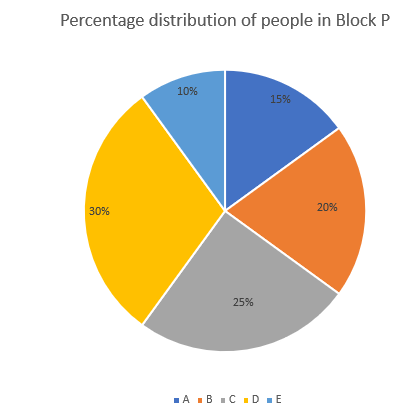

Q1. Find the sum of people living in Block Q of all the society.
(a) 2075
(b) 2175
(c) 2285
(d) 2000
(e) 2170
Q2. Find the ratio of sum of people in Block P of society B and E to the people in Block Q of society C and E.
(a) 1:3
(b) 3:1
(c) 1:1
(d) 4:5
(e) 5:7
Q3. Find the average number of people living in block P of the society B, C and D.
(a) 600
(b) 675
(c) 525
(d) 625
(e) 705
Q4. If the ratio of male to female in Block P of society B is 3: 2 and the ratio of female to male in Block Q of society E is 7: 8, then find the number of males in Block P and Block Q of society B and E respectively.
(a) 425
(b) 400
(c) 530
(d) 470
(e) 420
Q5. In another society F, the number of people in Block P is 10% more than the people in society D of same block and the number of people in Block Q of society F is 215 more than the people in society B of same Block. Find the total number of people in Society F.
(a) 1500
(b) 1550
(c) 1690
(d) 1590
(e) 1650
Directions (6-10): Read the following bar graph and table carefully and answer the questions given below.
Bar graph shows percentage distribution of total vehicles manufactured by five (P, Q, R, S & T) different companies and table shows ratio of cars to bikes manufactured by each company.
Note: (a) Total vehicles manufactured = Total cars manufactured + Total bikes manufactured.
(b) Difference between total cars manufactured by R and total bikes manufactured by T is 22.
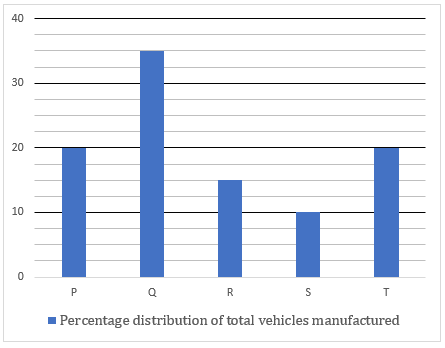
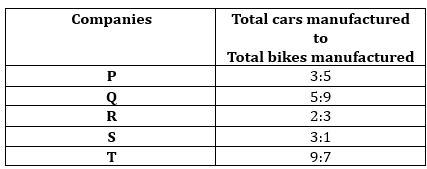
Q6. Find the ratio of total cars manufactured by Q to total bikes manufactured by R & S together.
(a) 21:19
(b) 25:23
(c) 27:22
(d) 23:19
(e) 23:28
Q7. Find the total bikes manufactured by P is what percentage of total cars manufactured by Q?
(a) 50%
(b) 80%
(c) 120%
(d) 100%
(e) 75%
Q8. There are two types of bikes manufactured by T i.e., electric and non-electric, which are in the ratio of 2:3 respectively. Find the difference between total electric bikes manufactured by T and total cars manufactured by P.
(a) 32
(b) 38
(c) 30
(d) 24
(e) 46
Q9. If 85% of the total vehicles manufactured by S are sold and 15% of the cars are unsold, then find the total unsold bikes of S.
(a) 1
(b) 7
(c) 2
(d) 5
(e) 3

Directions (11-15): Line graph shows percentage distribution of number of students (Girls + Boys) in schools P, Q, R, S & T. The table shows the ratio of girl students and boy students in these school. Read the following line graph and table carefully and answer the questions given below.
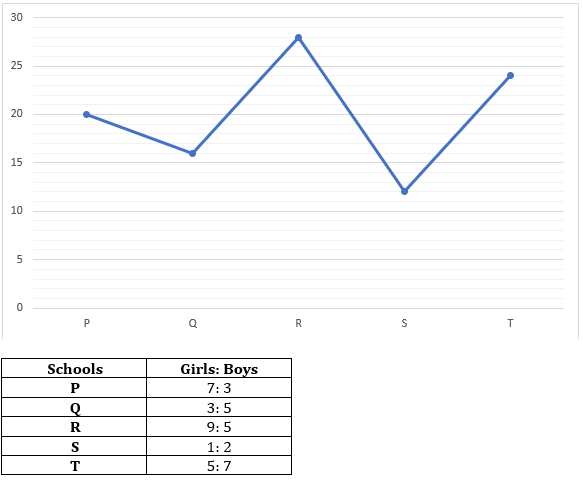
Note: Total number of boys in T = 203
Q11. Find the ratio of number of girls in Q to the number of boys in P.
(a) 1:1
(b) 1:4
(c) 4:1
(d) 2:5
(e) 4:5
Q12. Find the number of girls in Q is what percent of number of boys in P?
(a) 90%
(b) 100%
(c) 75%
(d) 50%
(e) 85%
Q13. Find the difference between number of boys in Q and S together and number of girls in P and T together.
(a) 82
(b) 94
(c) 102
(d) 87
(e) 108
Q14. If the number of students in A is 40% more than that in P and the ratio of boys in R to that in A 5: 8, then find the number of girls in A.
(a) 154
(b) 166
(c) 196
(d) 174
(e) 182
Q15. If the number of teachers in all schools together is 50% more than that of girls in S, then find the number of teachers in all the schools is how much more/less than boys in Q?
(a) 34
(b) 58
(c) 26
(d) 44
(e) 42
Solutions
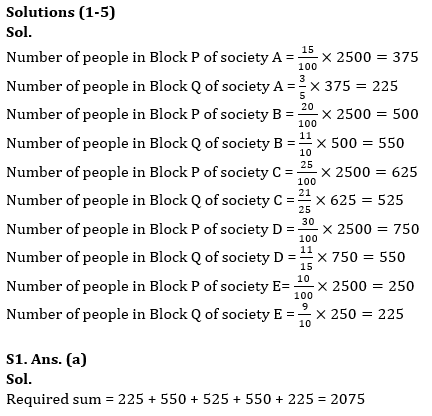
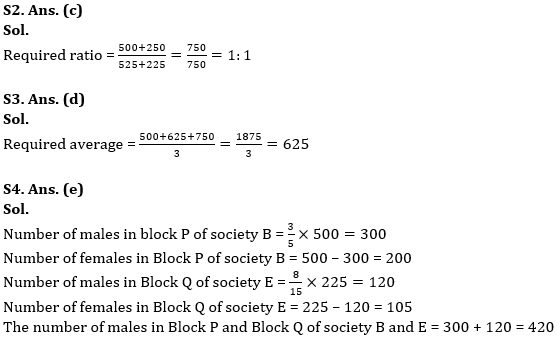

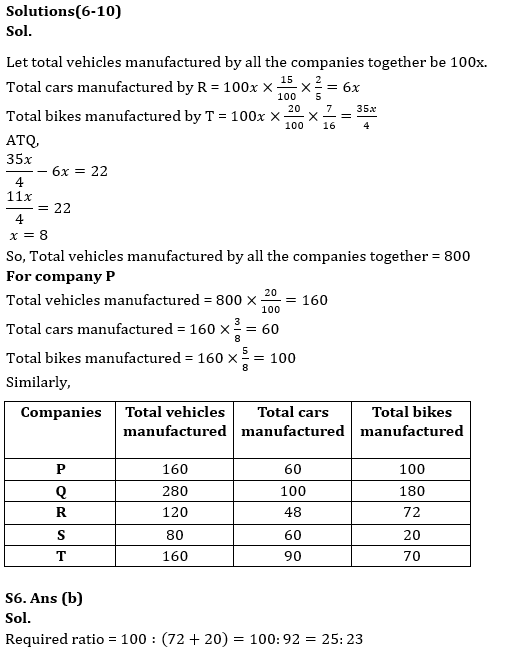
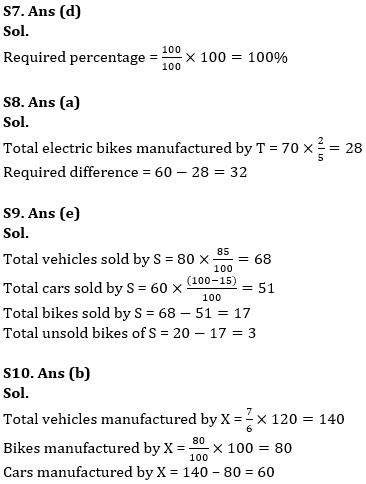
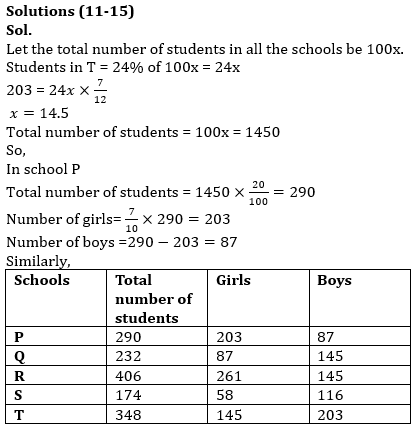
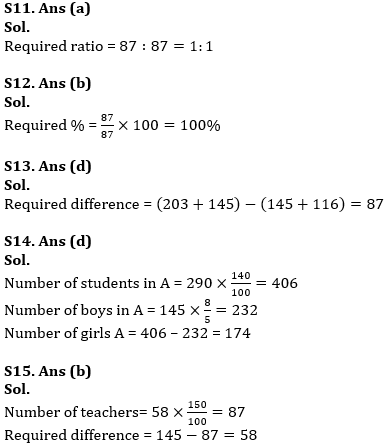





 Quantitative Aptitude Quiz For Bank Main...
Quantitative Aptitude Quiz For Bank Main...
 Quantitative Aptitude Quiz For Bank Foun...
Quantitative Aptitude Quiz For Bank Foun...





